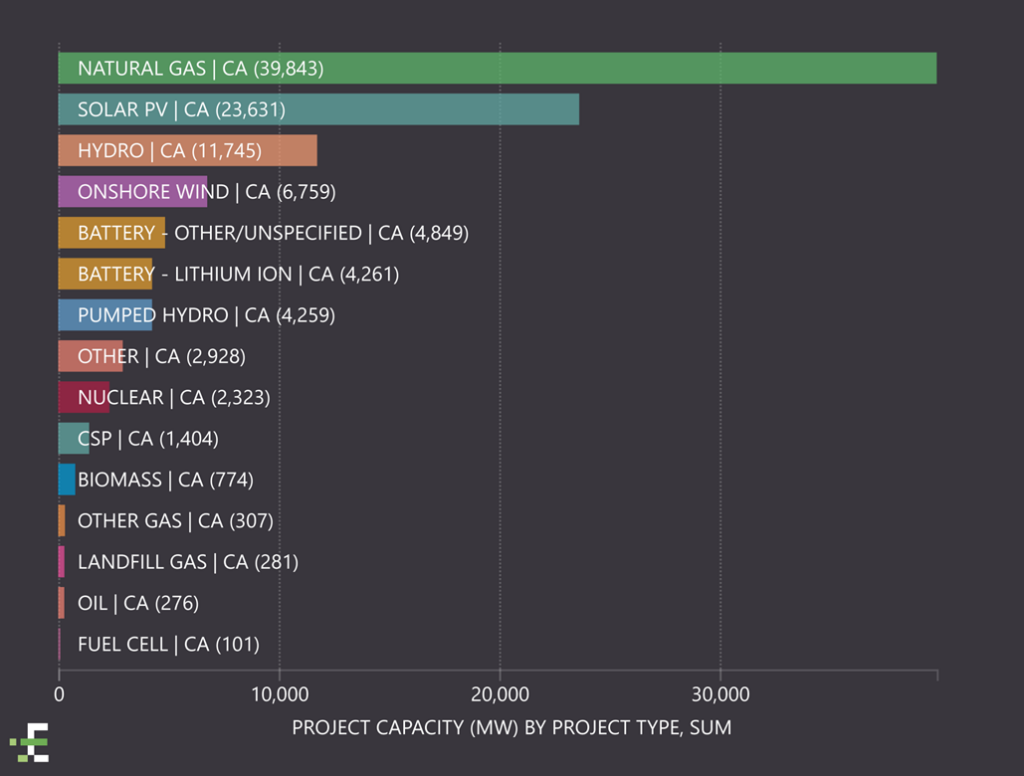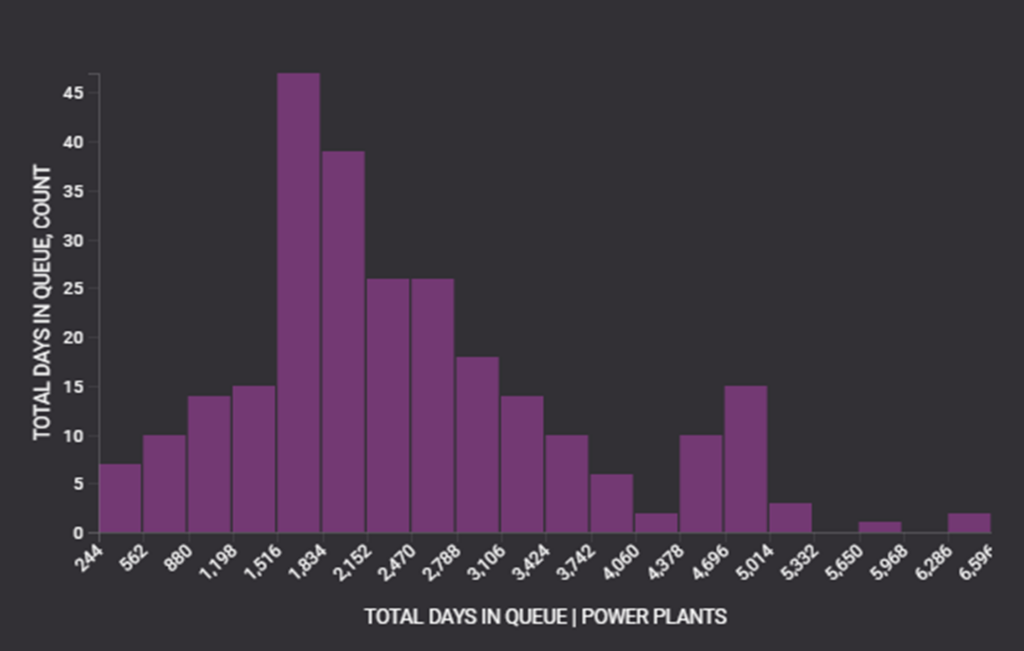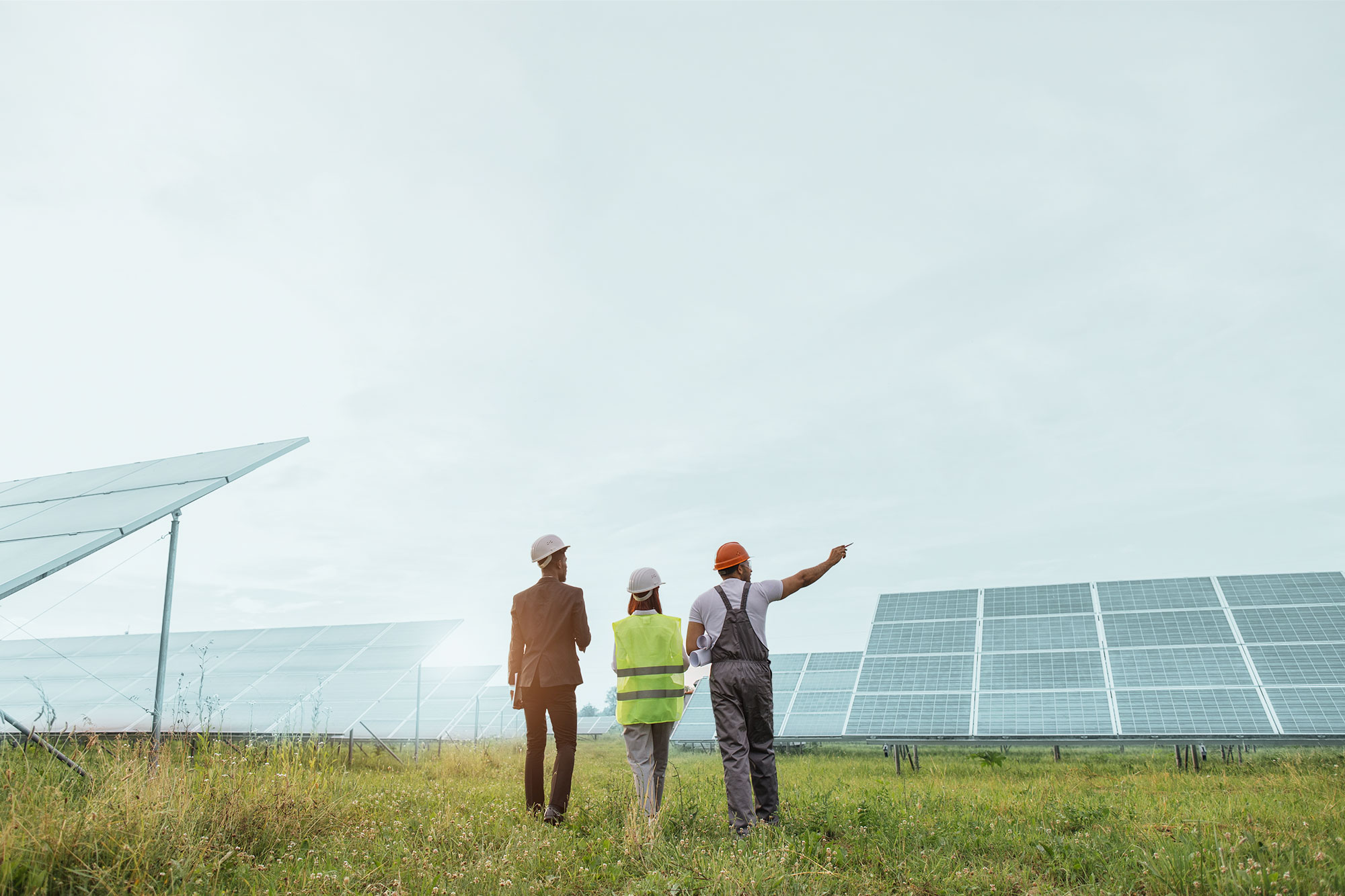Staying current with policy and regulation updates at all government levels can be crucial to your project development and business operations. As these changes can occur swiftly, merely reacting can lead to diminished project development efficiency. Our legislative and PUC docket datasets in our Power and Renewables Foundations solution provide you with the ability to find areas with favorable policies to invest in – or stay up to date with – the latest policy changes that effect your projects in the area.
Consider the recent Powering Up Californians Act (SB-410). This legislation seeks to facilitate energization and service upgrade processes while maintaining the state’s commitment to decarbonization and air quality standards. The California Public Utilities Commission (CPUC) will now set average and maximum target energization timelines for projects awaiting grid interconnection, ensuring compliance with these new deadlines. Utilities are now also required to report their compliance with these new timelines or at least explain why they are noncompliant and provide a plan for how they will become compliant and are allowed to make necessary investments in a timeline consistent with existing regulations. To recover costs, utilities may request that the CPUC authorize ratemaking mechanisms within 180 days and must agree to retain an independent third-party auditor to review business practices and procedures for energizing new customers.
What does this legislative shift mean for the existing energy landscape in California? The state’s goal is to achieve carbon neutrality by 2045 and maintain a net negative emission of greenhouse gases thereafter. California’s current energy landscape predominantly relies on the plurality of natural gas-fired generators to meet current energy demand totaling nearly 40GW. However, non-emitting generators already make up the majority of California’s generating capacity, indicating a positive shift towards state-wide emission goals. When considering the roster of yet-to-be-built projects, these goals begin to look achievable.
However, it’s worth keeping in mind that the existence of this legislation implies that there is a risk to state emission goals not being met potentially due to a potential shortfall of renewable resources to offset the generating capacities of carbon intensive generators by the 2045 target. What’s more, persistent interconnection queue backlogs have hindered the prompt processing of project submissions. Several potential solutions could be deployed, such as PJM’s recent adoption of a “first read, first served” policy that allows positions that are more prepared for development to begin construction over more speculative ones, but it would be difficult to determine the best course of action until the root causes are understood.


Understanding your current position is a crucial first step when considering significant policy adjustments that could impact the energy market. Analyzing data from the CAISO interconnection queue in Enverus PRISM® can offer insight into how this new policy will affect your future investments in the area or existing projects currently in the queue. By averaging the difference between the first queue date and operating date, we find that of now-operating projects, the average number of days a project is in the queue is between 2,300 days for solar and 2,900 days for batteries, or 6-8 years depending on the project type. Bearing in mind that the longest time spent in the CAISO queue is about 6,700 days, or nearly 18.5 years, neither the current average nor the current longest time could be considered reasonable by the CPUC and project developers.

Assuming a consistent ratio of solar, battery and wind capacity replacement for all the natural gas capacity, we could expect a doubling of current operating capacity by 2045. This would require significant increases of wind from the current average of 154MW to 308MW, battery, from 238 MW to 417MW, and solar, from 624MW to 1087MW capacities coming online every year to meet the state’s emission goals. What’s clear is that the state’s emission goals are at risk without the CPUC requiring utilities to provide reasons for project delays and address the underlying systemic issues.
Harnessing the power of extensive legislative and PUC Enverus datasets alongside PRISM’s robust project and interconnection reporting equips you with a strategic advantage in navigating evolving policy landscapes. By leveraging this comprehensive solution, you can pinpoint areas ripe for investment and expedite your projects through the interconnection queue. Our team of Enverus experts is ready to guide you through the intricacies of policy and regulation updates, ensuring you make informed decisions that drive success. Don’t miss out on the opportunity to streamline your projects and capitalize on favorable policies. Reach out to us today and discover how Enverus can empower your ventures in an ever-changing regulatory environment.








